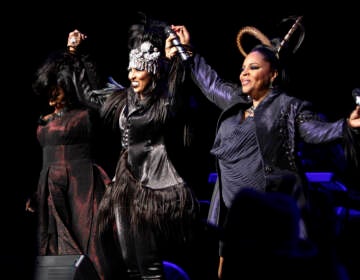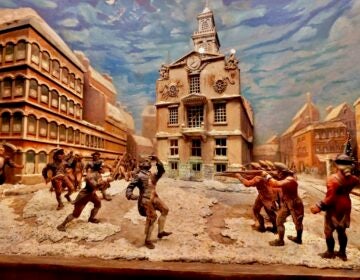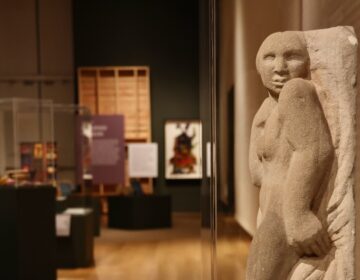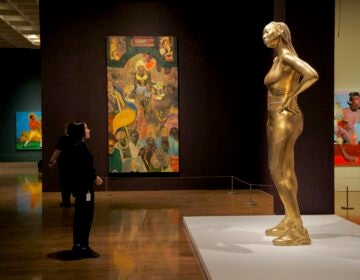Traveling ‘Monumental Tour’ brings art to four iconic Philly spots
The pieces that make up the “Monumental Tour” have rotated through New York City, Atlanta, Chicago, and other cities.
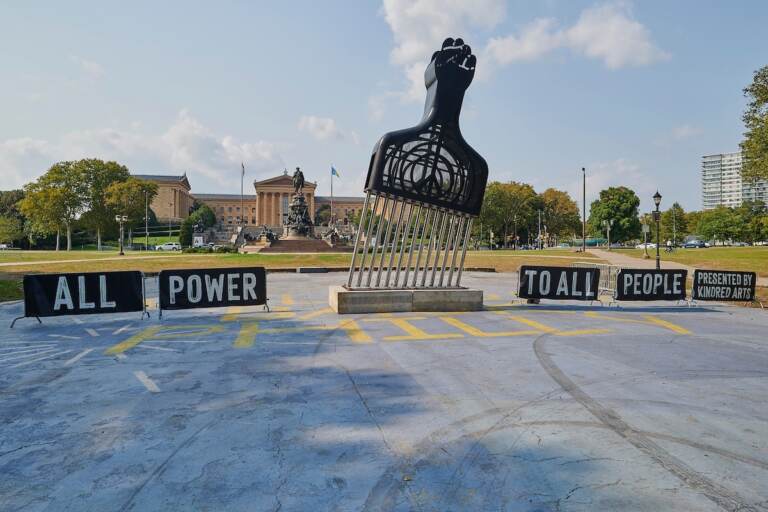
Hank Willis Thomas's ''All Power to All People'' stands 28 feet tall and weighs 24,000lbs. It is installed in Eakins Oval as part of the Monumental Tour, made up of four large sculptures installed in celebrated public places. (Albert Yee/Kindred Arts)
A touring exhibition designed to challenge colonial ideas of power, community, and incarceration has landed in Philadelphia, bringing four art pieces to some of the city’s most prominent public spaces.
The pieces that make up the “Monumental Tour” have rotated through New York City, Atlanta, Chicago, and other cities. The traveling art aims to affirm people across Philadelphia’s diverse communities while creating spaces where those willing can learn about other lived experiences. This is the project’s second stop in Philadelphia.
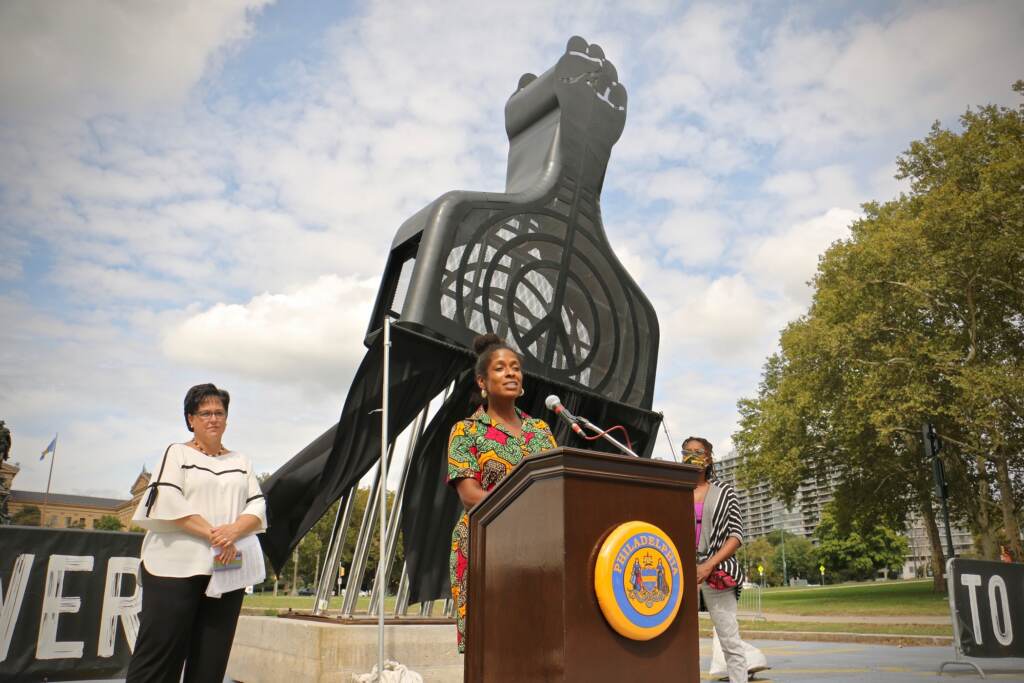
Familiar to the city will be a 28-foot-tall Afro pick with raised fist capping the handle. A symbol of “community, strength, perseverance, comradeship, and belonging,” the pick sits on the base of the Benjamin Franklin Parkway with the Art Museum as the backdrop. Named “All Power to All People,” the sculpture by artist Hank Willis Thomas was first seen in 2017 as part of the Monument Lab project.
Parks and Rec unveiled its Parkway installation Tuesday. It brought a jolt of new energy to a historic space steeped in old ideas of institutional power and now undergoing a long-awaited reinvention.
Commissioner of Philadelphia Parks and Recreation Kathryn Ott Lovell said it’s only fitting to have “All Power to All People” on the parkway as the department tries to make it a vehicle for community building and civic expression. The exhibit is a reminder art should enhance the aesthetic of shared spaces, while challenging previously held assumptions, said Ott Lovell.
“This is our Champs-Élysées, this is our most iconic boulevard, this is the money shot,” said Ott Lovell. “It’s where people come to celebrate, it’s where people come when they’re angry, as we saw in the protests that happened last summer.”
The second piece along the parkway is a pair of hands in front of Shakespeare Park. The statue, created by Christopher Myers, is called “Caliban’s Hands,” referencing the Shakespeare character in “The Tempest,” and deals with the concepts of colonialism and servitude.
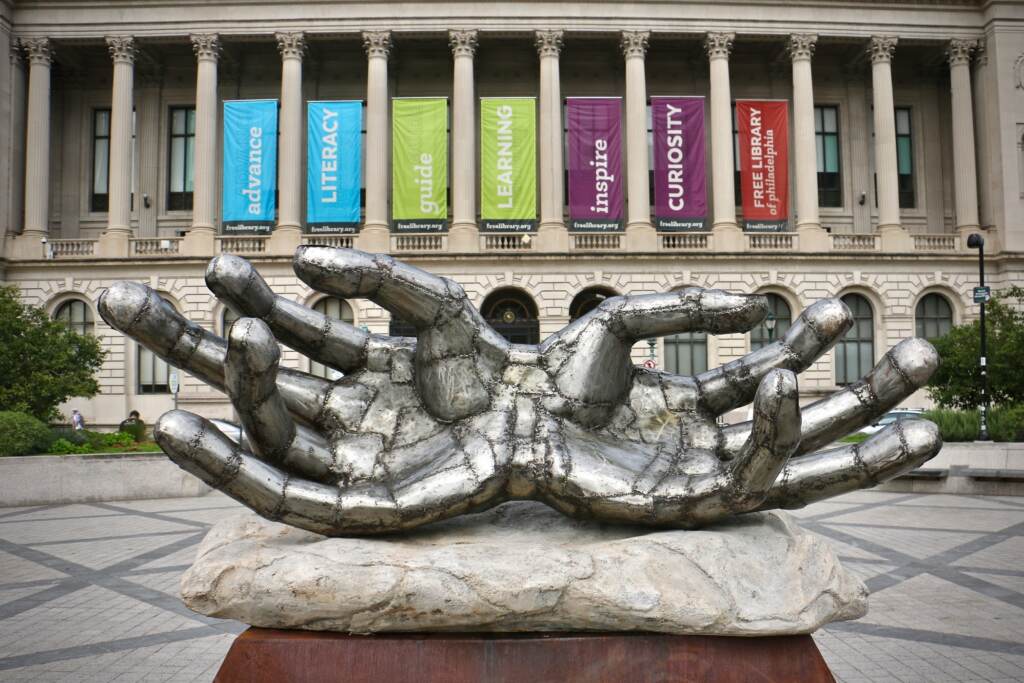
At Thomas Paine Plaza — a space that once honored former mayor and police chief Frank Rizzo, known for his heavy-handed policing of Black Philadelphians — a steel and glass box offers a critique of the carceral system.

Coby Kennedy’s piece is named after Kalief Browder, a Black teenager who died by suicide after spending three years – two in solitary confinement – on Rikers Island without being convicted of a crime.
The exhibition ends at the Cherry Street Pier with a piece looking at deindustrialization, which artist Arthur Jafa says dashed the aspirations of many in the Black middle class. A monster truck tire is wrapped in iron chains with Teddy Pendergrass ballads playing in the background.
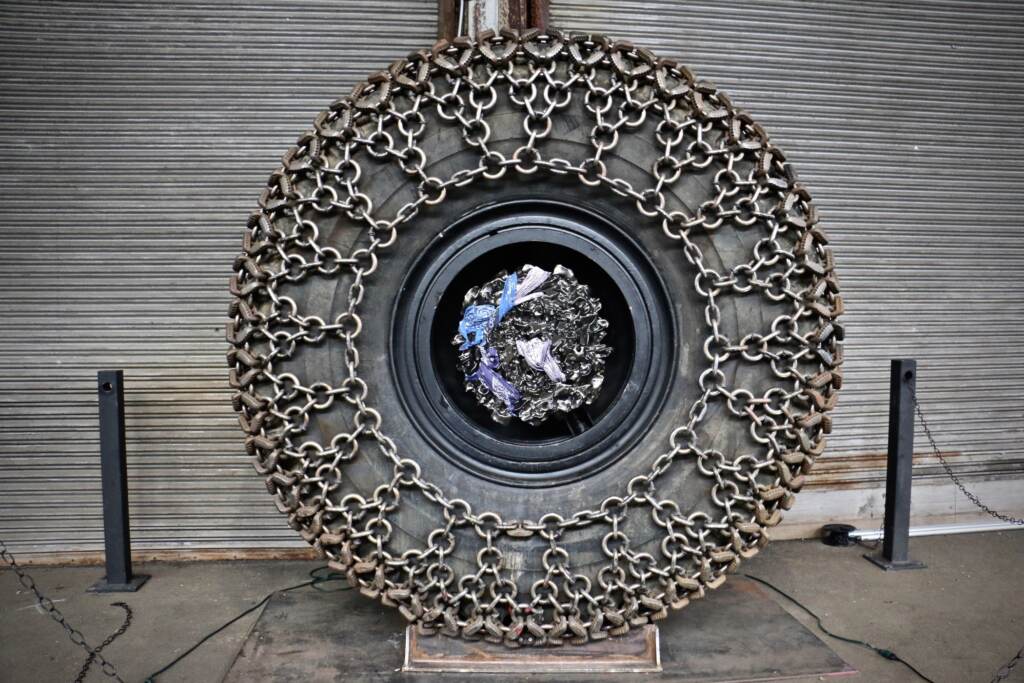
“How you program an outdoor space is, it constitutes your values, the values of your city,” said Marsha Reid, who curated the installation as director of Kindred Arts. “If you only have warlords on horses, then that’s the master narrative. If you tell other stories, you’ve subverted that narrative.”
One of the stories the exhibition is trying to shed light on is that of Julian Francis Abele, the city’s first African American architect, who contributed to the designs of iconic Philadelphia buildings such as the Philadelphia Museum of Art.
The exhibition is dedicated in Abele’s honor and will be in the city until the end of January 2022. A 22-minute walking guide is available for free on Monumental Tour’s website.

Subscribe to PlanPhilly
WHYY is your source for fact-based, in-depth journalism and information. As a nonprofit organization, we rely on financial support from readers like you. Please give today.




